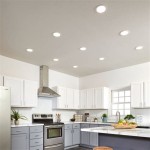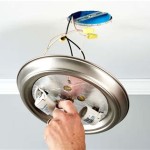Essential Aspects of Wooden Ceiling Light Design
Wooden ceiling light designs carry a unique charm and aesthetic appeal. They exude warmth, natural beauty, and sophistication, and can significantly enhance the ambiance of any space. This article delves into the essential aspects that contribute to the successful design and implementation of wooden ceiling lights, providing insights and guidance for architects, designers, and homeowners alike. ### Light Transmission and Illumination The primary function of wooden ceiling lights is to provide illumination. The design should consider the light transmission capabilities of the wood material, ensuring adequate brightness without compromising the aesthetic appeal. Lighter woods, such as maple or birch, allow more light penetration, while darker woods, like walnut or mahogany, create a more subdued and intimate ambiance. ### Structural Integrity As ceiling fixtures, wooden ceiling lights must possess robust structural integrity. The design should ensure that the light unit is securely anchored to the ceiling, preventing it from sagging or swaying. The choice of wood species is crucial, with hardwoods such as oak or cherry providing superior strength and durability. ### Design and Aesthetics Wooden ceiling light designs can vary significantly in terms of aesthetics. The shape, size, and style should complement the overall interior design scheme. Contemporary designs often feature sleek lines and geometric shapes, while traditional styles may incorporate intricate carvings or exposed beams. The color and finish of the wood can also greatly influence the ambiance, ranging from natural hues to painted or stained finishes. ### Functionality and Convenience The design should prioritize functionality and convenience. The light unit should be easy to install and maintain, with accessible components for bulb replacement. Additionally, the placement of the light fixture should maximize illumination without creating glare or eye strain. ### Harmony with the Architecture Wooden ceiling light designs should be in harmony with the architectural style of the space. For example, a rustic cabin may call for a light fixture crafted from rough-hewn logs, while a modern loft may opt for a sleek and minimalist wooden light design. ### Sustainability and Environmental Impact Sustainability should be a consideration in the design and manufacturing of wooden ceiling lights. The use of sustainably sourced wood and energy-efficient lighting components can reduce the environmental impact and promote a greener approach to home décor. ### Conclusion Wooden ceiling light designs offer a versatile and aesthetically pleasing way to illuminate and enhance any space. By considering the essential aspects discussed in this article, designers can create light fixtures that are both functional and beautiful. These aspects guide the selection of wood species, structural design, aesthetic considerations, functionality, harmony with the architecture, and sustainability efforts, ensuring that wooden ceiling lights seamlessly integrate into the overall design scheme and create a warm and inviting atmosphere.
Wood Light Natural Lights Made Of Lamps Eu

Lighting For Timber Ceilings About Mint Design

Ceiling Lights Made Of Wood Eglo

A Comprehensive Guide To The Best Ceiling Lights Designs For Your Home

Wood Man Pendant Light Ceiling Fixture Wooden Chandelier Lighting Set Of 3 Pendants Lamp In Buy

Wooden Hanging Diff Design Hexagon Square And Triangle Shape Ceiling Light

Lighting Integration In Wood Ceilings 9wood

7 Wooden Ceiling Lamp Ideas Woodz

Dome Wooden Ceiling Hanging Lamp For Home Corded Electric

Nordic Irregular Flush Mount Solid Wooden Ceiling Light For Living Roo
Related Posts








